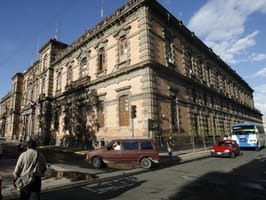Great part of the Augustinian Recollect patrimony forms a hidden continent that surfaces every now and then, thanks to the efforts of rehabilitation of old buildings. Archeologists and architects are their best researchers. Proofs of this are the cases of the old convents of Madrid, Alcala or Talavera in Spain.
Something similar happened in Guadalajara, the capital of the State of Jalisco in Mexico. The building is centric in location. It had three floors and a beautiful interior patio as shown in the study, although it went through a series of modification according to its use as convent, seminary and finally as military quarters.
Unique Museum
The Augustinian Recollect Nuns, whose congregation was born in Spain in 1589, entered Mexico a century later. The first foundation, which dates back to 1688, was realized in the city of Puebla by bishop Manuel Fernandez of the Holy Cross. Beginning the year 1935 their convent, which is dedicated completely to female cloistered life, has served as Museum of Religious Art, a matter that is unique in the whole of Mexico.
A few years later other monasteries were born from the mother convent of Puebla, the community of Oaxaca in 1697 and that of Guadalajara in 1720. Although the construction of the building in Guadalajara was finished only in 1733, five nuns from the community of Puebla started to reside in this place as early as February 19, 1720.
Seminary
The religious peacefully lived in this convent for more than one hundred and twenty five years. After they were forced into exclaustration in 1860 by the Government of the Nation the building was left to disuse for eight years. It was auctioned in 1868 and the humanist-philanthropist Dionisio Rodriquez who bought it granted the archdiocese the usufruct of the old convent. The archdiocese, having lost its properties to the government at that time, concerted the building into a seminary. For more than half a century the old convent served as the “Seminario Conciliar de Guadalajara”. It was during this time that the building underwent massive remodeling under the direction of Engineer Antonio Arroniz Topete. It was also within this period when one of the richest libraries of the city, with more than 15,000 books, was added to the structure. The seminary also integrated laboratories for biology, chemistry and physics in their formation. The first Astronomical Observatory in Guadalajara was also located in the same building.
Barracks
Every thing was lost when the troops of Alvaro Obregon took the city on the 8th of July 1214. The seminary became military quarters, and the library was literally thrown into the river. From that time on it functioned as a military installation. Actually it is called “La Quinceava” and serves as the headquarters of the 15th Zone.


